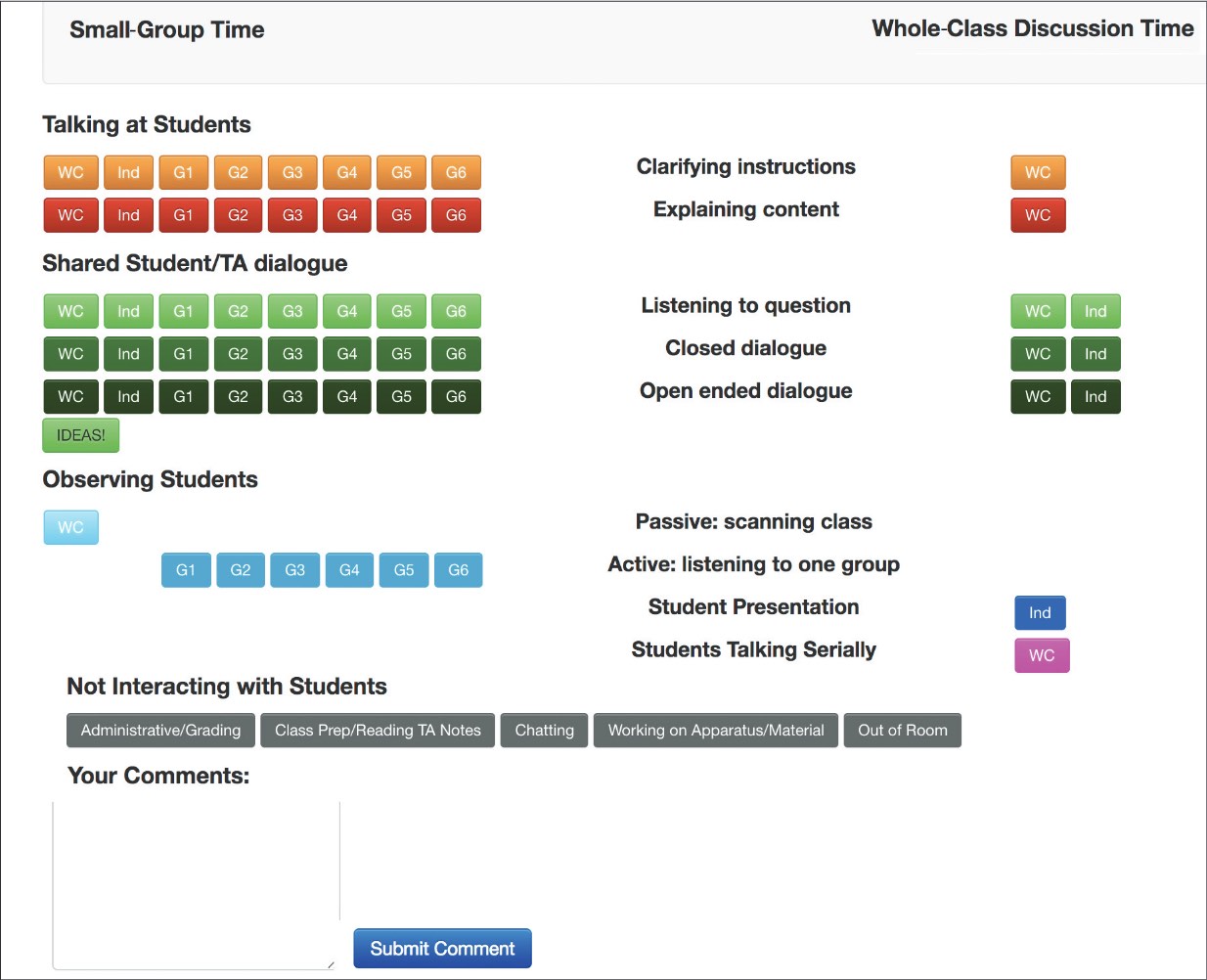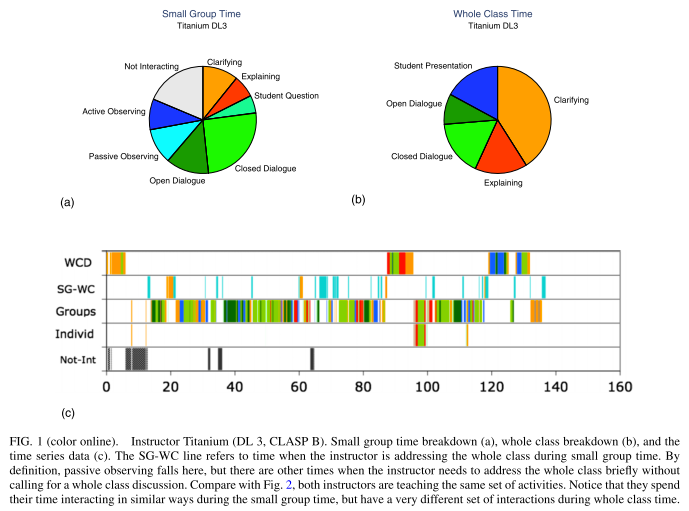Developed by Emily A. West, Cassandra A. Paul, David Webb, and Wendell H. Potter
| Purpose | To categorize pedagogical teaching actions/interactions, and support instructor professional development. |
|---|---|
| Format | Observation protocol |
| Duration | N/A min |
| Focus | Teaching |
| Level | Intro college |
Example screenshot of the RIOT web interface. (Paul and West, 2018)

more details
This is the second highest level of research validation, corresponding to at least 5 of the validation categories below.
Research Validation Summary
Based on Research Into:
- Classroom behavior
Studied Using:
- Iterative observations
- Inter-rater reliability
- Training materials
Research Conducted:
- At multiple institutions
- By multiple research groups
- Peer-reviewed publication
The RIOT is an observational protocol that allows an instructor to categorize classroom interactions between the instructor and the student during a classroom observation. The RIOT categories were developed based on observations of the Collaborative Learning through Active Sense-making in Physics (CLASP) curricula at UC Davis. These categories are meant to capture the major pedagogical moves of the instructor in an active learning environment, as RIOT was developed initially to help new physics teaching assistants be more aware of what they were doing in the classroom.
At the most basic level, the observation protocol differentiates between four major types of interactions: talking at students, shared instructor-student dialogue, observing students, or not interacting. The major interaction types are subdivided into smaller categories to more richly describe the types of interactions within the classroom. The instructor can perform each category of interaction with an individual student, one of five or six different small groups, or with the whole class. Each different combination (category and with whom the interactions take place) appears in a two-dimensional color-coded grid of buttons on the laptop screen. By design, the instructor can only engage in one interaction category at a time.
References
- C. Paul and E. West, Using the Real-time Instructor Observing Tool (RIOT) for Reflection on Teaching Practice, Phys. Teach. 56 (3), 139 (2018).
- E. West, C. Paul, D. Webb, and W. Potter, Variation of instructor-student interactions in an introductory interactive physics course, Phys. Rev. ST Phys. Educ. Res. 9 (1), 010109 (2013).
- M. Wilcox, C. Kasprzyk, and J. Chini, Observing Teaching Assistant Differences in Tutorials and Inquiry-Based Labs, presented at the Physics Education Research Conference 2015, College Park, MD, 2015.
- M. Wilcox, Y. Yang, and J. Chini, Quicker method for assessing influences on teaching assistant buy-in and practices in reformed courses, Phys. Rev. Phys. Educ. Res. 12 (2), 020123 (2016).
We don't have any translations of this assessment yet.
If you know of a translation that we don't have yet, or if you would like to translate this assessment, please contact us!
| Typical Results |
|---|
Typical results on the RIOT for one instructor:
|




